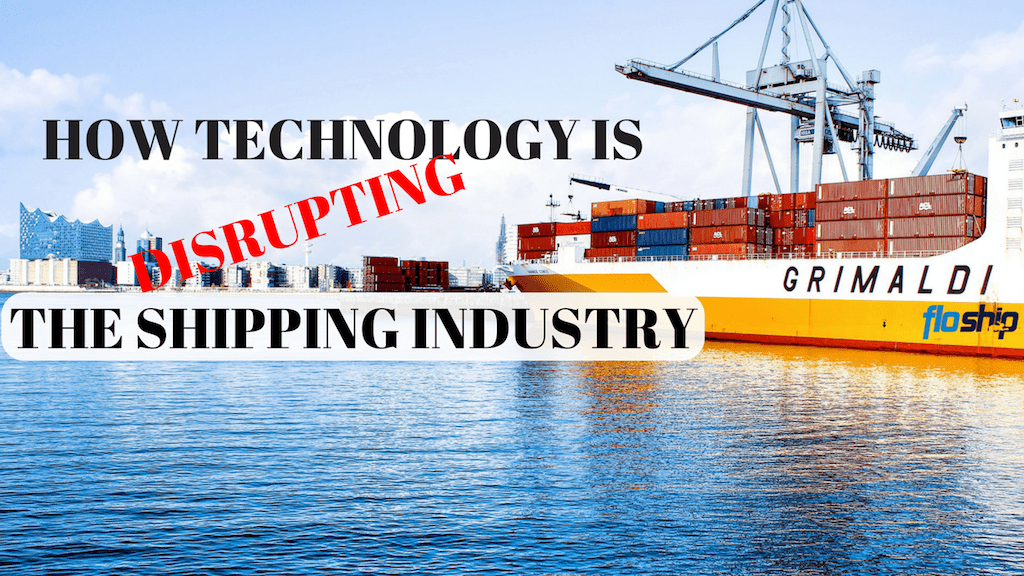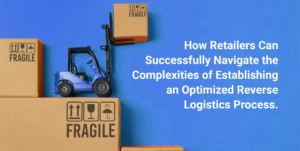To say that we’re in a technological revolution would surprise no one. With the Internet of Things constantly growing and mobile devices taking over the world, everyone can see that technology is changing the world at a breakneck pace.
But it may surprise you to know that technology is also having a major effect on the shipping industry, which is traditionally known as slow to change. Some of this technology is brand new, while other shifts are hundreds of years old.
Some of the companies at the forefront of the revolution are well-known, like Uber and Amazon, while others aren’t household names.
In this article, we’re going to break down the how, what, and why of shipping technology.
Here are 5 technology disrupting the shipping world.
Tech #1: Trains Are Back

Let’s start with the old tech that’s gaining new life.
Believe it or not, trains are back. Not the old-timey passenger trains of the 1800’s and early 1900’s, but massive freight trains. In fact, China recently completed construction on the world’s longest railway, spanning over 8,000 miles from China to Spain.
Why the resurgence of trains? Wade Shephard explains:
The economic fundamentals of this trans-Eurasian rail service is sound: these trains allowed manufacturers and freight forwarders to get their products between China and Europe in less than half the time of shipping by sea at a fraction of the cost of shipping by air. While these trains are not a viable form of transport for all types of products, they fill a void in the market for high-value products that need to be transported as quickly as possible, such as electronics, fashion items, car parts, heavy machinery, premium agricultural goods, and fresh meat.
In other words, shipping by air is fast but really expensive. Shipping by sea is cheap but slow. Transporting freight by train represents a middle ground – a fast and reasonably priced option.
Additionally, trains create fewer carbon emissions than standard shipping options. With increased pressure for environmentally friendly shipping options, more and more companies are relying on trains.
Tech #2: Vehicles Without Drivers

Driverless vehicles have been on the horizon for a while now, but until recent years they haven’t been more than a dream. But tech companies like Google and Uber have been pushing hard to get this technology into the mainstream, spending hundreds of millions of dollars on perfecting the necessary hardware and software.
Several years ago, the first fleet of driverless cars made their debut in Pittsburgh, demonstrating just how serious Uber is about the technology.
But Uber doesn’t just want to revolutionize the taxi business. They also want to use driverless technology to transform the shipping industry. Uber recently partnered with Otto, a trucking company that has been developing self-driving technology for large trucks.
As Bloomberg noted:
Otto has developed a kit that allows big-rig trucks to steer themselves on highways, in theory freeing up the driver to nap in the back of the cabin. The system is being tested on highways around San Francisco. Aspects of the technology will be incorporated into Uber’s robot livery cabs and will be used to start an Uber-like service for long-haul trucking in the U.S., building on the intracity delivery services, like Uber Eats, that the company already offers.
While driverless trucks and cars aren’t widely used yet, we should expect to see their use explode in the future as the technology improves. Obviously, there are numerous safety issues to explore, but with supremacy of the shipping industry at stake, we can almost be certain that driverless freight vehicles will become commonplace.
Tech #3: Ships Without Sailors

90% of the world’s trade movement is done by freight ships, and sending goods overseas is almost always done with ships given the high cost of air transport.
With the shipping industry depending so heavily on freight ships, it’s no surprise that companies are working to develop ships that depend less on humans, which cost more and are prone to mistakes. Additionally, as regulations over shipping emissions increase, it’s essential that shipping companies figure out ways to develop ships that generate less pollution.
Autonomous ships are that solution.
As Oskar Levander of Rolls-Royce writes:
Remotely controlled ships, piloted by people on shore, and autonomous ships, which can take actions for themselves, are the latest beneficiaries of increasing digital connectivity and intelligence. These developments in electronic sensors, telecommunications, and computing have sparked interest in a range of autonomous vehicles including cars, planes, helicopters, trains, and now ships. Companies and academic researchers around the world are working hard to turn these ideas into reality.
The Guardian reports that Rolls-Royce is working to have a completely autonomous ship on the seas by 2035.
Before completely autonomous ships show up, we should expect to see remotely controlled ones which can be directed from a command center.
The point is clear: driverless ships will soon join the ranks of driverless cars.
Tech #4: The Drones Are Coming

As the largest e-commerce company in the world, Amazon has billions of dollars tied up in the shipping industry. The company prides itself on quick delivery, making more and more products available with free two-day shipping in an effort to get customers into their Amazon Prime program. They also regularly promote their Internet of Things “Dash” buttons, which allow you to reorder specific products without even getting online.
Speed is the name of the game with Amazon.
Of course, one of the barriers to speed is getting products from the distribution center to the customer. They are forced to rely on the Post-Office and independent shipping companies, which obviously have significant speed delays.
With this in mind, they’re pushing hard to launch Amazon Prime Air, a program that will employ drones to deliver packages directly from the distribution center to the customer. Their goal is to eventually be able to deliver packages in just a few minutes.
And Amazon isn’t the only one interested in drone shipping. Google, the USPS, Uber, and even Dominoes are exploring the possibilities of drone delivery.
There a number of advantages in drone shipping, including:
- Quicker delivery
- Lower employee and energy costs
- Cargo doesn’t need to be lumped together in trucks
- Can make deliveries to inaccessible areas
- Etc.
Of course, there are still numerous regulations to overcome before drone shipping becomes a regular thing. Many people are rightfully apprehensive about having hundreds of drones flitting about their neighborhoods.
But make no mistake: the drones are coming.
Find out how to Automate your Amazon Order Fulfillment process with the Amazon + Floship Integration here!
Tech #5: The Robots Are Coming Too

In addition to pioneering the use of drones, Amazon is pushing hard to build a robot army of sorts. In 2012, the company purchased Kiva Systems, a robotics company, to help them automate much of their shipping process. They now use these robots to help select and pack products to prepare them for shipping.
That robot army keeps growing. The company recently reported that they doubled the number of robots in use, up to 30,000. This has increased the speed and decreased the cost of the shipping process.
As Ananya Bhattacharya writes:
The “click to ship” cycle used to be around 60-75 minutes when employees had manually to sift through the stacks, pick the product, pack it, and ship it. Now, robots handle the same job in 15 minutes…
These robots are not only more efficient but they also take up less space than their human counterparts. That means warehouse design can eventually be modified to have more shelf space and less wide aisles. At the end of the third quarter of 2015, Amazon was using 30,000 Kiva robots across 13 warehouses. Each Kiva-equipped warehouse can hold 50% more inventory per square foot than centers without robots. In turn, the company’s operating costs have been sliced by 20%—or almost $22 million—per warehouse.
As robotics technology continues to improve, we should expect to see an increase in the number of robots used by shipping companies. Their dramatic effect on shipping speed and costs makes them ideal for the shipping industry, and an increase in their use is the next logical step.
Conclusion
In the shipping industry, we see the collision of old school and brand new technology. Ships meeting autonomous driving, package delivery meets drones, humans meet robots. It’s amazing, somewhat frightening, and incredibly fascinating.
Some of these technologies are years off, while others are just around the corner. One thing is clear: the shipping industry is changing and there’s nothing anyone can do to stop it.
More Shipping News
- How Amazon Floats All That Prime Free Shipping
- Want to Sell on Amazon.com Don’t BelieveThese Myths
- Ways Amazon is Killing Traditional Retail
- Cracking The Harmonized System Code: Product Classification for International Shipping

Ready To Upgrade Your Logistic Solution?
Speak to Floship ecommerce logistic consultant about improving your global support chain today





